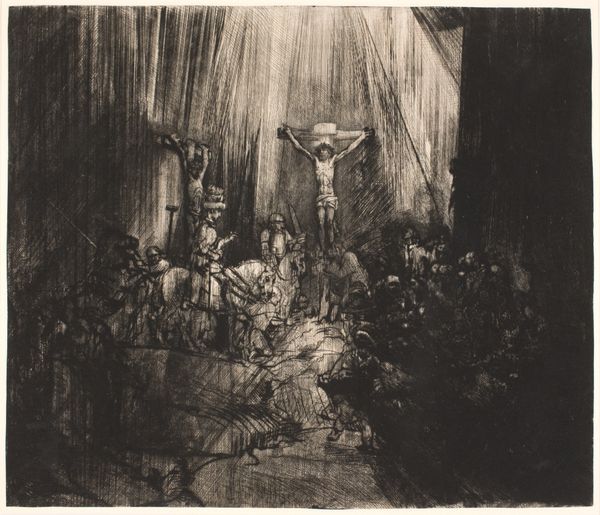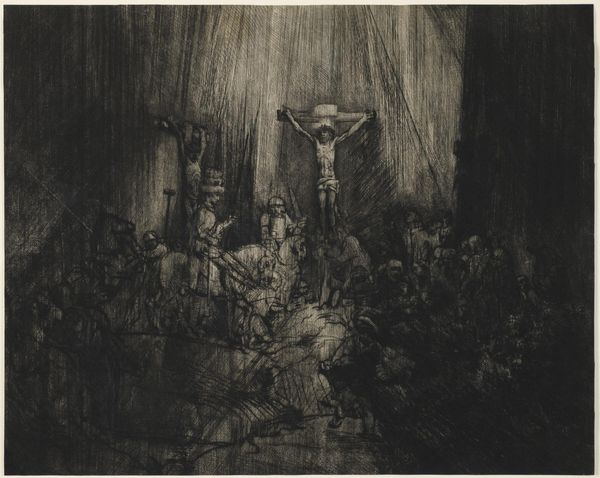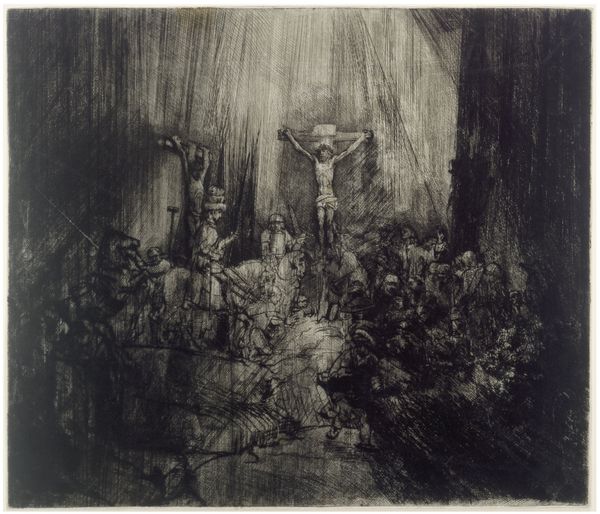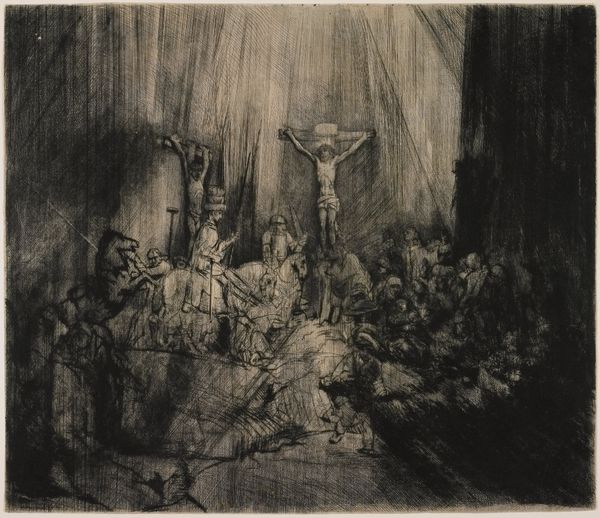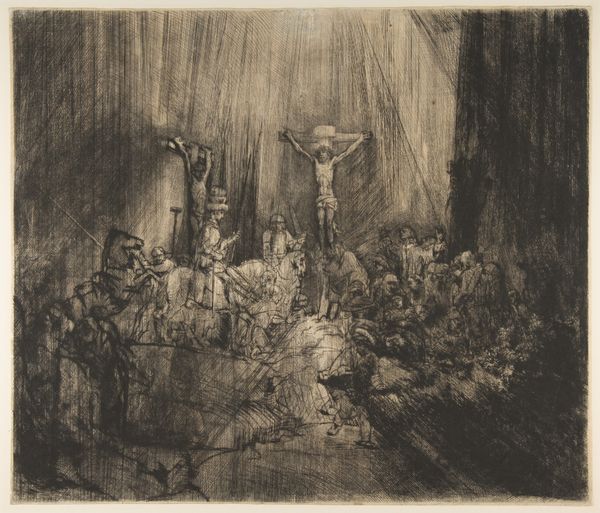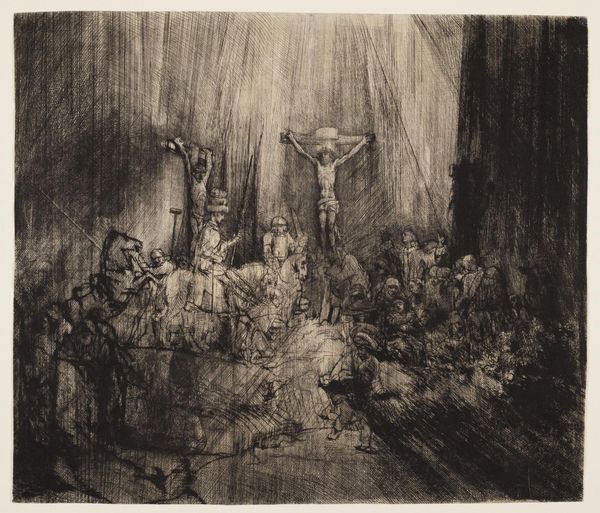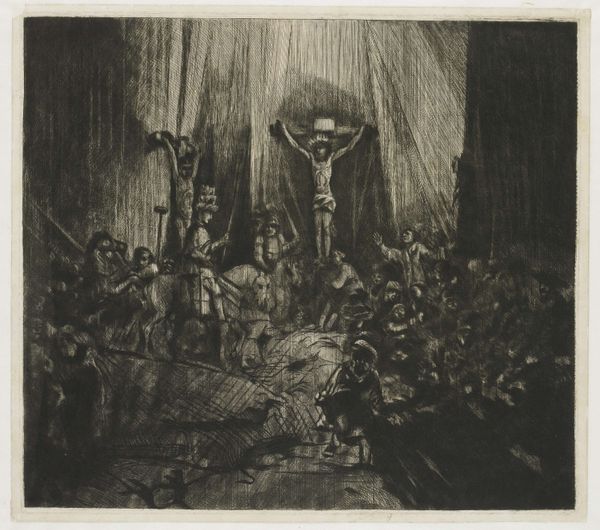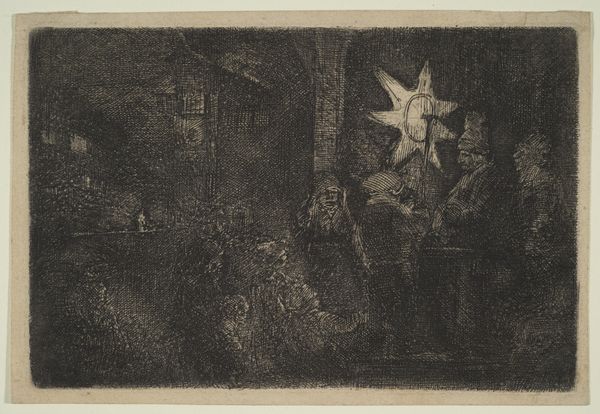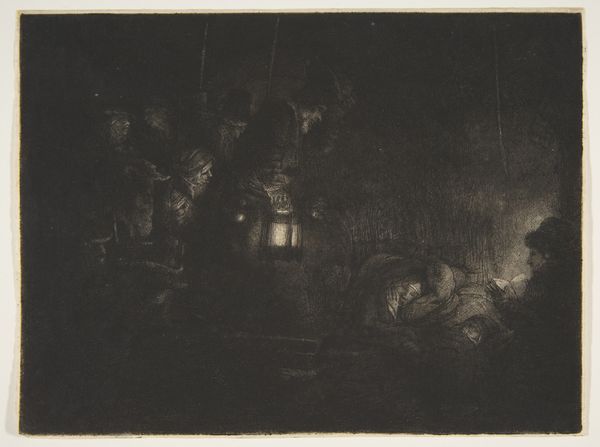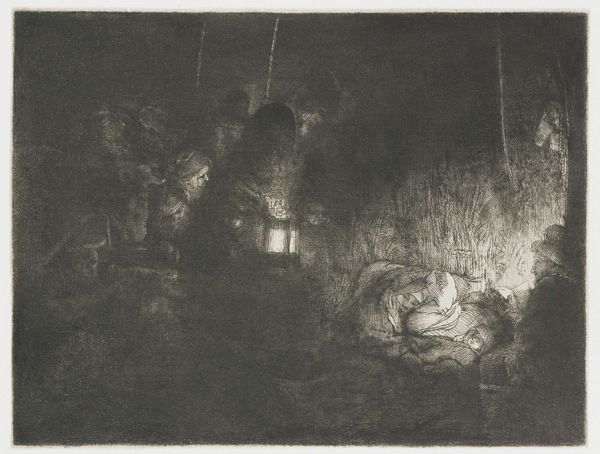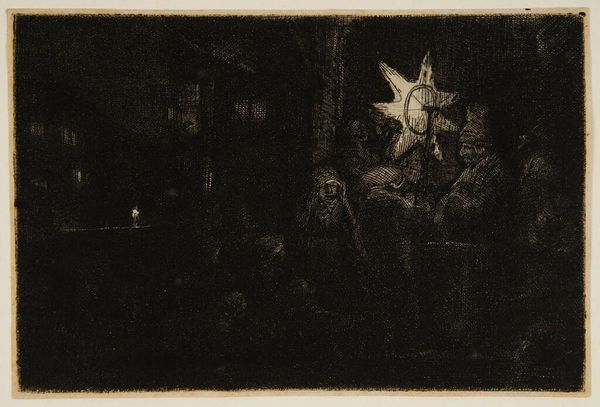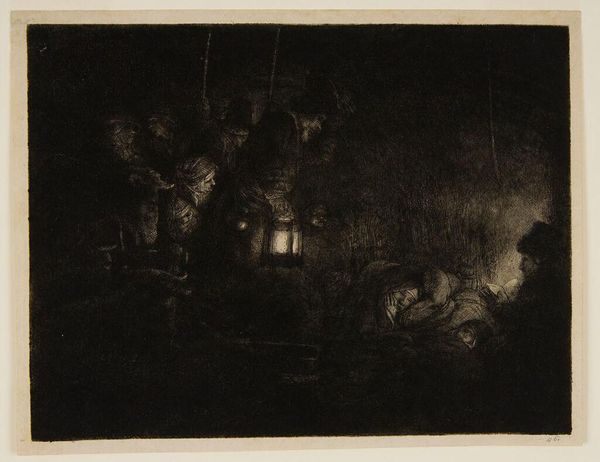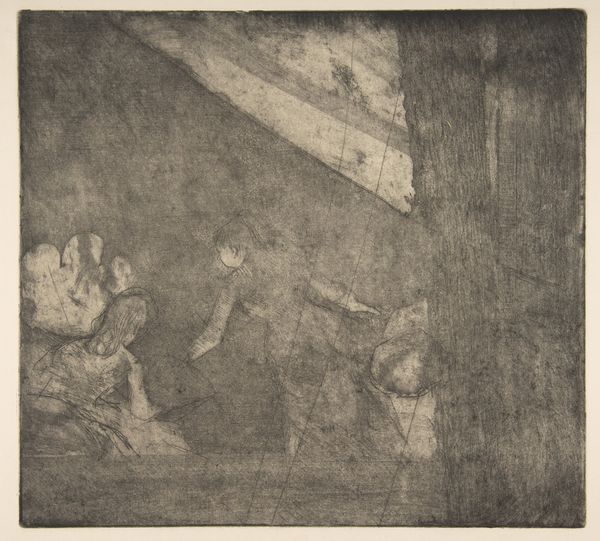
Christ Crucified between the Two Thieves (The Three Crosses) 1653
0:00
0:00
print, etching
#
narrative-art
#
baroque
# print
#
etching
#
figuration
#
history-painting
Dimensions: sheet (trimmed to plate mark): 39 x 45.5 cm (15 3/8 x 17 15/16 in.)
Copyright: National Gallery of Art: CC0 1.0
Editor: This is Rembrandt van Rijn's "Christ Crucified between the Two Thieves," also known as "The Three Crosses," an etching from 1653. It’s intensely dark and dramatic. What social commentaries do you see present in this piece? Curator: Rembrandt’s choice to depict the crucifixion through stark light and shadow holds powerful commentary, wouldn't you agree? It prompts us to consider who is illuminated and who is cast into darkness, both literally and metaphorically. Who are those figures cloaked in light, those centered, and what power dynamics are at play within that social hierarchy? Editor: That makes me think about the figures in the shadows. Are they meant to represent those marginalized or ignored by society? Curator: Precisely. Rembrandt was working in a time of social upheaval and religious reformation. How might this context inform his artistic choices? Think about how this scene plays out from different points of view, beyond those typically shown in works from that period. Editor: Maybe it's a commentary on those in power, questioning their role and responsibility in the face of suffering? And, it makes me wonder what his intentions were regarding religion... I mean, showing the point of view of all sorts of bystanders, not just the divine one... Curator: Yes, Rembrandt, as an astute observer of humanity, pushes us to examine the institutional structures of power and privilege present within religious and social spheres. Consider too how art's role can be an instrument for sparking difficult but critical social discourse. Editor: So the composition itself is a challenge to established power dynamics. I see the piece so differently now! Thank you. Curator: It goes to show that visual narratives can both reflect and challenge the status quo. Thinking critically about that can lead to richer cultural engagement.
Comments
No comments
Be the first to comment and join the conversation on the ultimate creative platform.
